'The Last Crusade' at 30: 5 things you didn't know about the third Indiana Jones adventure
On May 24, 1989, Indiana Jones embarked on what was supposed to be his third and final adventure. That is, until, 2008, when a certain Crystal Skull brought the globetrotting archeologist out of retirement, with one more expedition to follow in 2021. But it’s hard to imagine Indy’s next crusade being a better farewell to the character than Indiana Jones and the Last Crusade. Thirty years on, that last shot of Professor Henry Jones Jr. (Harrison Ford) — and Professor Henry Jones Sr. (Sean Connery) — riding off into the sunset on horseback remains the perfect farewell to George Lucas and Steven Spielberg’s signature creation.
The rest of the movie continues to delight as well; sure, Raiders of the Lost Ark may be the quintessential Indy picture, and the scarier, bloodier Temple of Doom has its fans as well. But Last Crusade is a terrific trilogy capper, boasting some of the franchise’s most rousing set-pieces — Exhibit A: that amazing tank chase — as well as a father/son relationship that’s a reliable source of comedy and emotional heft. It’s also the entry in the series that explicitly establishes Indiana Jones as an eternal action movie hero. By basing the movie around a search for the immortality-granting Holy Grail, Lucas and Spielberg ensured that Indy would live forever on in moviegoers’ hearts and minds even as the franchise came to an (temporary) end. “It was called The Last Crusade for a reason,” confirms screenwriter Menno Meyjes, who collaborated with Lucas on breaking the story for the film. (Jeffrey Boam, who died in 2000, is credited with penning the final screenplay.) “We thought the idea of the Grail would provide nice closure.”

In separate interviews, Yahoo Entertainment spoke with Meyjes and the film’s art director, Stephen Scott, to unearth five behind-the-scenes stories about Indiana Jones’s first (and best) last crusade.
The hunt for the Grail is based on actual history
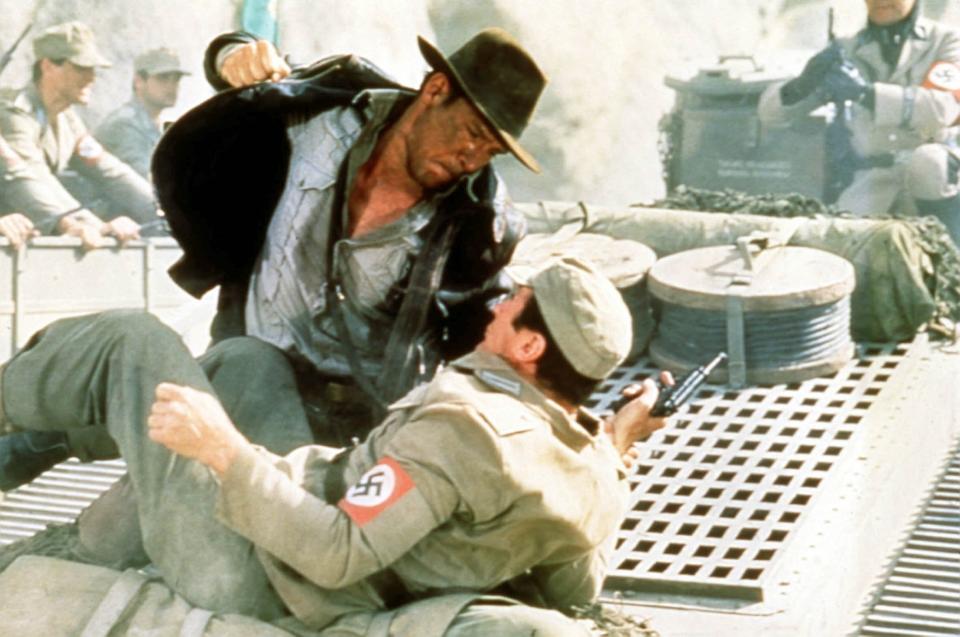
After Temple of Doom opened to mixed reviews in 1984, the franchise’s minders wanted the third film to be more in the spirit of Raiders of the Lost Ark. Having enjoyed his collaboration with Meyjes on 1985’s The Color Purple as well as episodes of his TV series Amazing Stories, Spielberg dispatched the writer to Skywalker Ranch to aid Lucas in cracking a back-to-basics approach for Indy’s new expedition. “He literally just said to me, ‘Do you think you can go up to San Francisco and sit with George to just talk things through?’” Meyjes remembers, adding that their creative process played out both in the Lucasfilm offices as well as on horseback in the surrounding Marin County countryside. “He had a couple of great horses, and I’d often go for rides in the afternoon. It was a fantastic set-up there.”
It occurred to Meyjes early on that a return to the Raiders spirit would mean a return to a narrative centered around the quest for a holy relic. “My feeling was that the Ark had been a great idea, and another legendary artifact that people would want to go after seemed to make the most sense, as opposed to Temple of Doom where there isn’t necessary an object that they’re looking for.” History, rather than legend, wound up offering the perfect object. “I had read how Adolf Hitler and Heinrich Himmler were both involved with the occult. They actually had at least one archeological team trying to find the French castle where the Grail knights supposedly made their last stand. So they were literally [hunting] for the Holy Grail! It was an artifact that people in the Third Reich thought had magical power.”
As Meyjes recalls, Lucas responded with instant enthusiasm to the idea of Indiana Jones racing Nazi relic hunters — funded by American tycoon Walter Donovan (Julian Glover) — in a crusade to find the Grail. But he did have one important note: “George said, ‘Indy’s a materialist, so he’d never have that idea. It would have to be someone close to him would come up with the idea [to find the Grail], but Indy would never think of that.’ I thought it was so fascinating how he understood the character. It’s been a lesson for me ever since.”
We almost didn’t meet Professor Jones Sr.
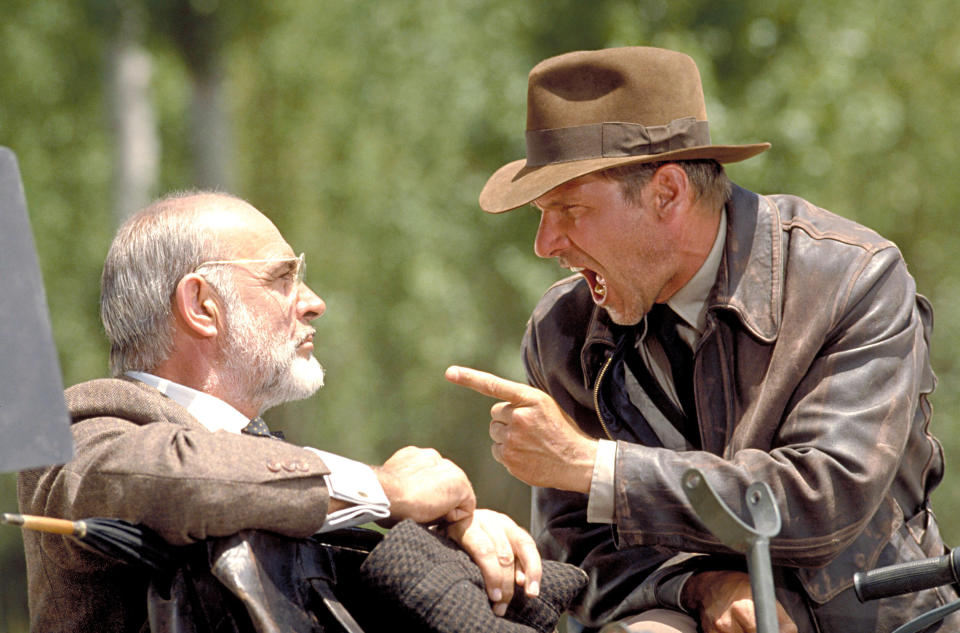
Despite being only a little over a decade apart in their real-life ages, Connery and Ford easily rank among modern cinema’s most believable father-son duos. According to Meyjes, though, early drafts of the story didn’t include a team-up between Jones Jr. and Jones Sr. “For a while, we were working on the idea that Indiana had a girlfriend looking for the Grail,” the writer recalls. But they had no plans to bring back either of Indy’s previous sweethearts, Kate Capshaw’s controversial Willie Scott or Karen Allen’s much-loved Marion Ravenwood, whose long-awaited return in Crystal Skull is one of that film’s bright spots. (The role of Last Crusade’s love interest eventually fell to Alison Doody, who plays Nazi-in-disguise Dr. Elsa Schneider.)
“We hadn’t really given her a name, because at that point we were very much spit-balling ideas. That [character] ultimately didn’t pan out, so we went with the idea of his father, and it became clear really quickly that they’d be in opposition to one another, because you wanted it to be a dynamic relationship.” As Meyjes remembers, the introduction of Henry Jones Sr. also provided the creative impetus for Last Crusade’s opening sequence: a crowd-pleasing “origin story” flashback that stars River Phoenix as young Indy.
Elstree was the new Petra
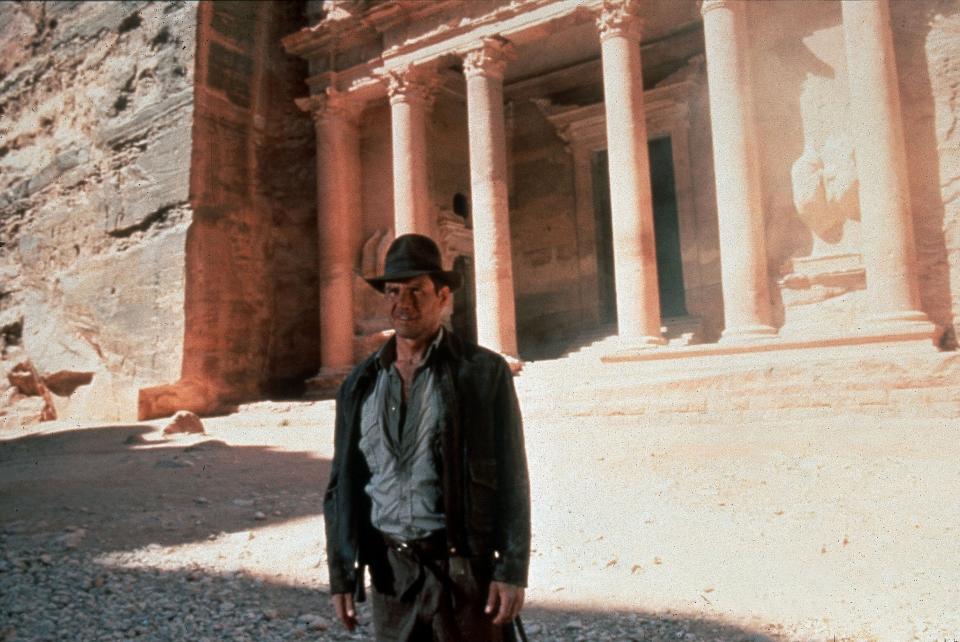
In the film, Indy’s crusade ends at a temple nestled inside the exotically named Canyon of the Crescent Moon. Spielberg filmed the exteriors for the film’s climax in the ancient city of Petra, with local landmark Al Khazneh (which translates as, “The Treasury”) providing the entrance to the Grail’s final resting place. That site remains a tourist destination today, although, as Stephen Scott notes, you can’t venture very far inside in search of any relics. “There is no interior at the real location,” he explains. “There’s a small recess that’s maybe 15-20 feet deep and then it stops. So you can have people go in and come out, but you can’t take the camera inside, because there’s nothing there.”
As the film’s art director, it fell to Scott to construct an ancient temple interior on the modern-day soundstages at London’s famed Elstree Studios. “All of the rock was made of expanded foam or plaster,” he recalls. “We’d put up sheets of the stuff and fix it up to resemble the interior of a cave.”
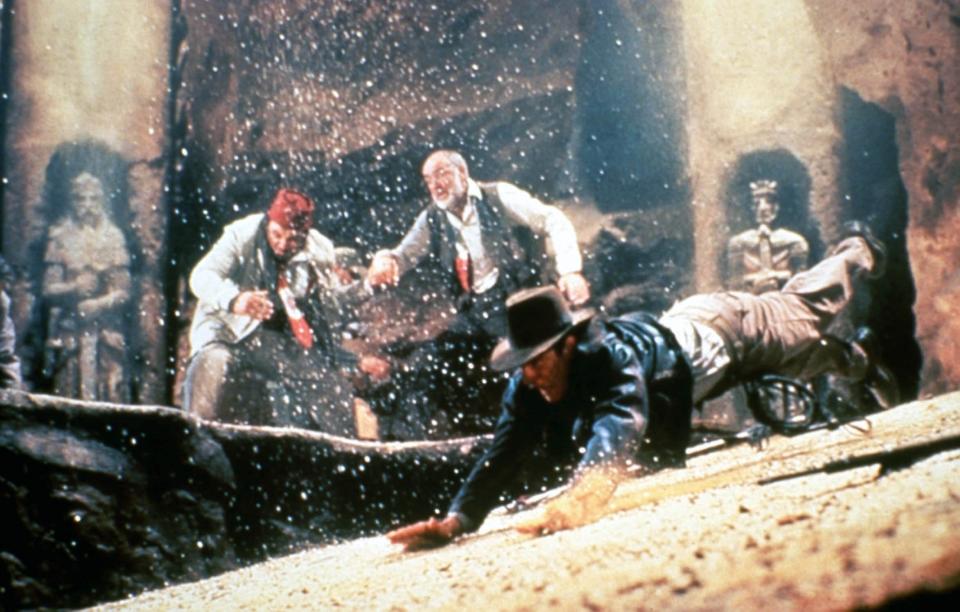
The main room of the temple interior was also built on top of hydraulic rigs for the moment when the floor splits open when Elsa dares to try and take the Grail into the outside world. “In conjunction with the special effects team, we constructed a system of hydraulics and large mechanical moving platforms, which could split open and end up at funny angles. It could look as though the whole of that floor was chewed up and thrashed, so to speak.”
Running the Grail gauntlet
Before he can find the Grail, Indy first has to survive three tasks: an obstacle course that includes cleverly-hidden blades, a perilous game of hopscotch and an invisible bridge. Scott says that each of those traps were built on Elstree stages with the stunt team specifically in mind. “When you have stunt work, people are required to be on wire rigs, so all of the stages had upper structures because you need the wires to hang onto something. And if there are any fights or action on the ground, we would incorporate rubber surfaces so that nobody really gets hurt.”
For the “Breath of God” challenge — where Indy ducks and rolls in order to dodge instant decapitation — Scott remembers slathering on the fake spider webs. “We used a spray glue to make the webbing. Imagine a tin can slit all the way around the top edge and filled with glue: it’s rotated very quickly and sprays out the glue and you can sprinkle on dust and talcum powder to make it look more like spiderwebs. It drives very quickly and naturally, so you can push it to one side. Spiderwebs, snakes and creepy-crawlies are very much the flavor of these movies, you know! It was always about adding more, more, more.”
Building a better Grail
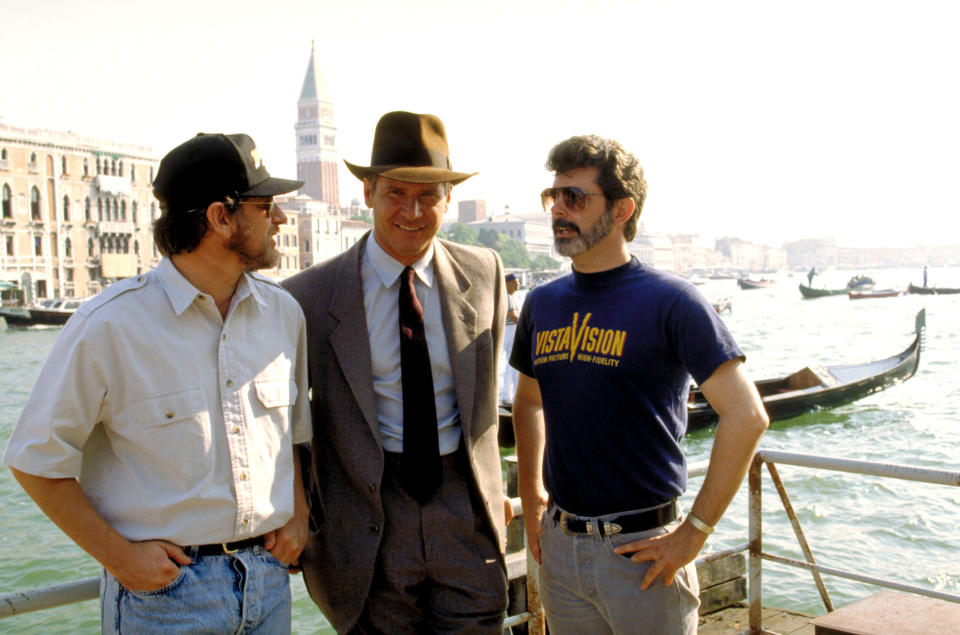
While Meyjes came up with the idea of basing the movie around the Holy Grail, he credits Lucas with designing the version of the mythical object that’s seen in the finished film. After Indy survives the gauntlet, he enters a cavern that’s occupied by a centuries-old knight (Robert Eddison) and dozens of cups of various shapes and sizes. Donovan and Elsa follow close behind, and the knight tells the trio to pick which cup they believe to be the Grail. Elsa selects an ornate golden chalice for Donovan, who sips from it...and quickly learns that she chose poorly.
When it’s Indy’s turn, he eschews the more glamorous goblets in favor of a nondescript clay cup. And would you know it? He chose wisely. “You’re always up against previous representations of the Grail, but George wanted it to be a simple cup — a carpenter’s cup,” Meyjes says. “He came up with that on the first day and as an example of his practical know-how, he immediately said, ‘Let’s make [a model] in plastic and give it three dimensions.’ As a collaborator, George is just terrific and very practically minded. Sometimes you think to yourself: ‘How the hell are we going to do that?’ But with George and Steven, they would just figure it out. The joy in watching them work together was seeing two guys at the top of their game.”
Indiana Jones and the Last Crusade is available for rent or purchase on Amazon, iTunes and Vudu.
Read more from Yahoo Entertainment:
'The Natural' at 35: Here's how Robert Redford hit that explosive home run
'The Mummy' at 20: Brendan Fraser reveals 5 things you didn't know, including how he almost died

 Yahoo Home
Yahoo Home 

